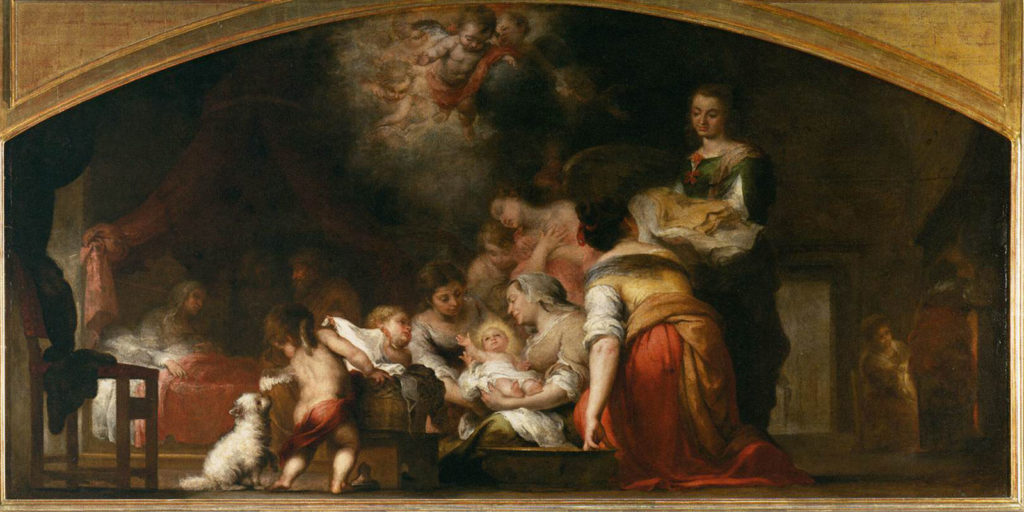The Nativity of Mary is a Roman Catholic and Anglican feast on September 8 that celebrates the birth of the Virgin Mary.
Nobody knows when the Virgin Mary was born. The traditional date is nine months after the Immaculate Conception on December 8.
Church tradition normally commemorates the death of saints. Only the Virgin Mary and Saint John the Baptist are honored with birthday celebrations.
It’s notable that the veneration of the Virgin didn’t start with the church, it came from the people. The church accepted this in stages. Sadly, it retains the counter narrative that there is something wrong with women. That’s impossible. All God’s children must be equal. The acceptance of the Immaculate Conception, the idea that the Virgin was divine from the very moment of conception, was a major event.
The Nativity of Mary celebrates her birth. Images of the birth of Christ are so predominant that birth images read as his, but this is Mary.
Veneration of the Virgin is often associated with a place or a sacred object, but ultimately represents love for the female aspect in all her forms, including Mother Earth.
It’s also worth noting that the Orisha faiths which have been so demonized by Christianity, also rely on a sacred object, a sacred place and the Holy Spirit to connect with the divine. Humans generate and respond to similar ideas around the world and across time. We are one.
The Birth of Mary by Giotto
The image of the birth of Mary is by Late Gothic/Proto-Renaissance Florentine painter Giotto di Bondone (c. 1267-1337). He was the leading Italian artist of his day.
At a time when stylized Byzantine forms were in favor (El Greco was trained in Byzantine style), Giotto painted from life. He influenced the Italian Renaissance painters who came after him.
Giotto paintings are immediately recognizable. There is a flatness to the backgrounds and figures that almost looks like a theatrical scene, a pop-up book, or a computer screen.
Bartolomé Esteban Murillo (1617-1682) was a Spanish Baroque painter. He is remembered for his religious paintings.

